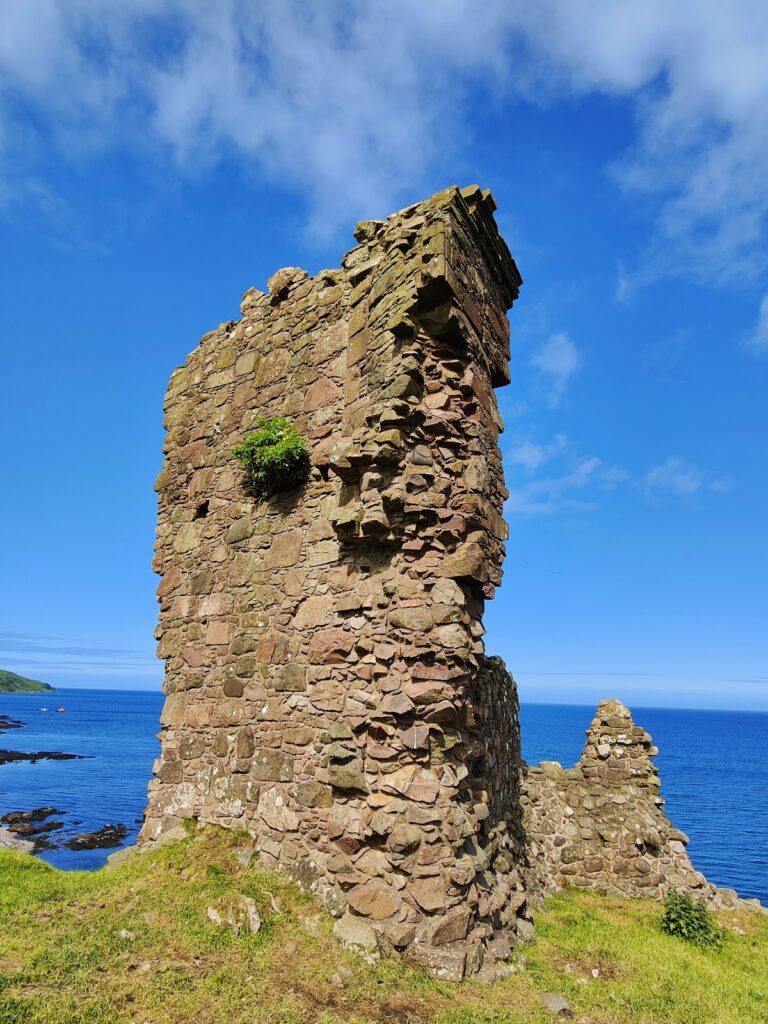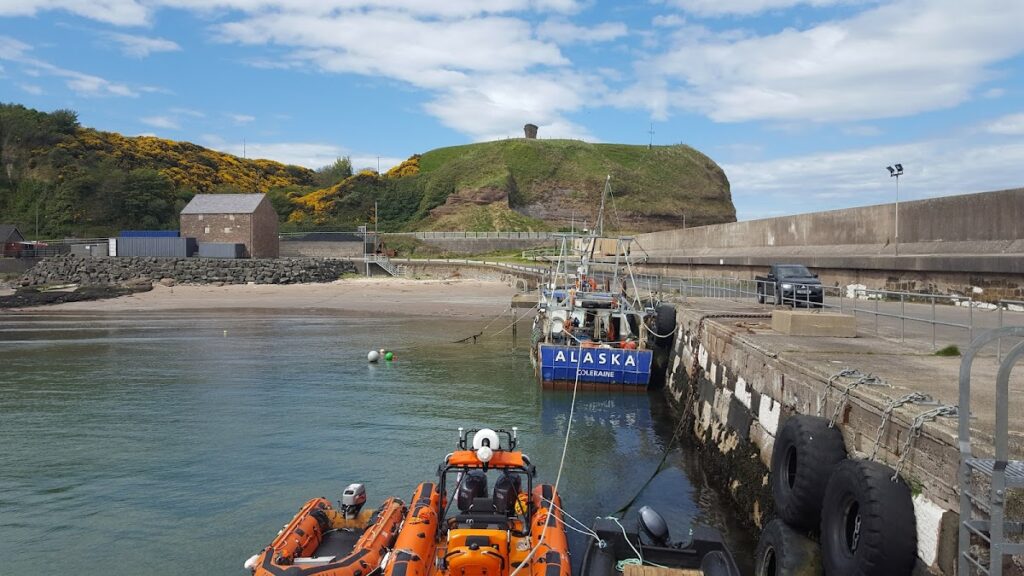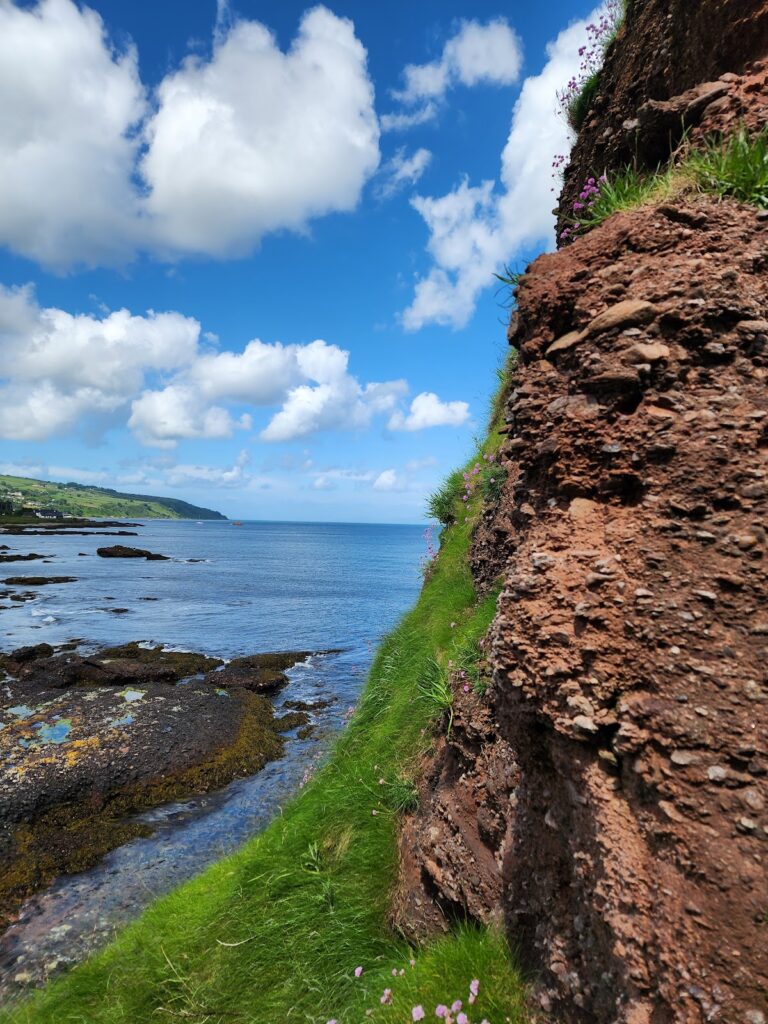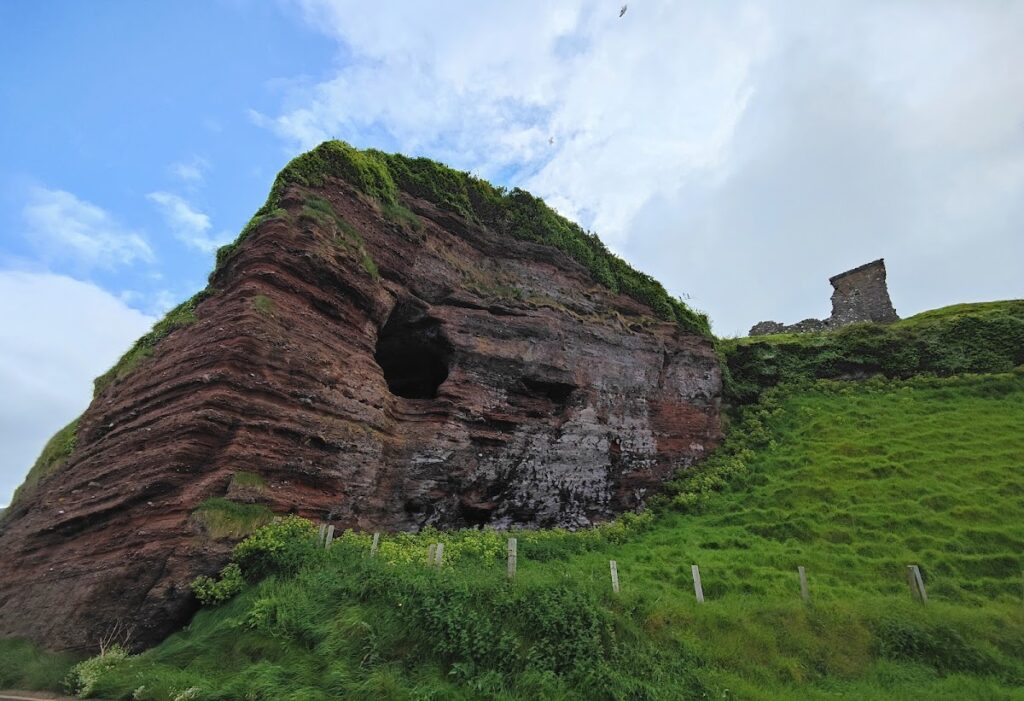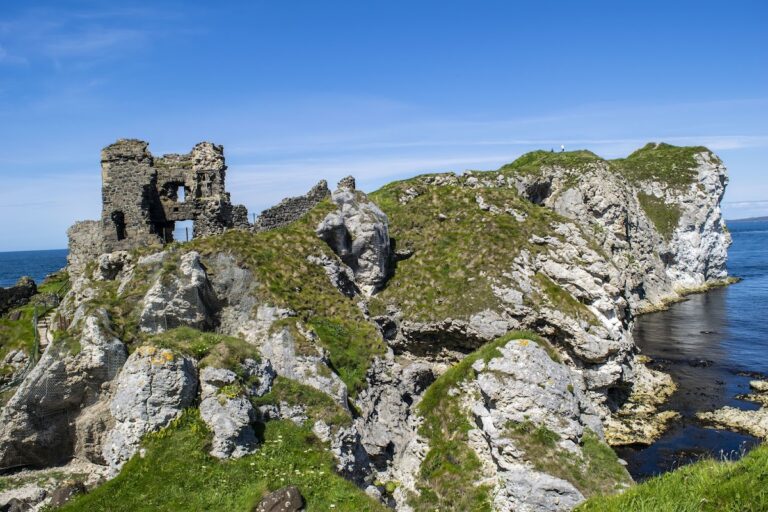Red Bay Castle: A Historic Fortress in Northern Ireland
Visitor Information
Google Rating: 4.4
Popularity: Low
Google Maps: View on Google Maps
Country: United Kingdom
Civilization: Unclassified
Remains: Military
History
Red Bay Castle is situated near Ballymena in what is now Northern Ireland. The fortress was originally established by the Bissett family during the 13th century on the site of an earlier defensive structure linked to the medieval Gaelic Kingdom of Dál Riata.
The foundation of the castle followed a dramatic shift in the Bissetts’ fortunes. After Walter de Bisset was charged with the murder of Patrick, Earl of Atholl, in 1242, the Bissett clan fled Scotland. Despite Ireland not being fully under English control at that time, King Henry III awarded Walter extensive estates within the Barony of Glenarm, allowing the family to establish a new stronghold at Red Bay on an important coastal headland.
Through marriage, Red Bay Castle entered the hands of the MacDonnells of Antrim. John Mor MacDonald, the first Lord of Dunnyveg, secured the castle by wedding Margery Bissett, connecting two powerful families. The MacDonnells enhanced and expanded the castle during the 16th century, reinforcing its role as a regional seat of power.
The castle’s military significance was underscored when, in 1565, Shane O’Neill, chieftain of the O’Neills of Tyrone, attacked and burned the fortress. Sorley Boy MacDonnell later undertook the castle’s reconstruction, restoring its defensive capabilities. However, after this period, the castle was eventually deserted and fell into ruin.
A brief restoration took place in 1604, reviving the castle once more. Its final destruction came in 1652 during the Cromwellian conquest of Ireland when forces loyal to Oliver Cromwell demolished the site amid campaigns to suppress Irish resistance.
Remains
Red Bay Castle occupies a strategic position on a rocky headland jutting into the sea, north of Glenariff. Its location atop an earlier motte-and-bailey fortification—a type of medieval wooden or earthen defense combining a raised mound (motte) and enclosed courtyard (bailey)—reflects the site’s longstanding military importance controlling access along the coastline.
The surviving archaeological footprint demonstrates successive phases of construction and rebuilding. Although specific architectural details are not recorded, the castle is known to have undergone significant enlargement in the 16th century under the MacDonnells. The repeated cycles of destruction and reconstruction contributed to a complex layering of structural remains.
At present, the castle stands in a state of ruin, reflecting the final blows it sustained in the mid-17th century. While no detailed decorative or inscriptional elements have been documented, the enduring stone foundations attest to the site’s enduring role through several centuries of conflict and political change.
Local tradition identifies the castle’s position as commanding panoramic views over the sea, a strategic asset that informed its original and continued significance. The visible remnants provide tangible links to the turbulent history of medieval and early modern Ireland, marking Red Bay Castle as a site shaped by warfare, alliance, and shifting power.

